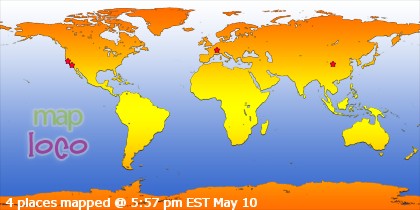"Cotton candy! Popcorn! Snow cones! Soda pop! Hot dogs!" "Right this way, Ladies and Gentlemen, right this way! Don't be afraid to step right up!" "Get your Souvenir Programs here! Buy 'em while they last!" "Souvenirs! Balloons!" "Peanuts! Hot roasted peanuts! Get 'em right here!" "Ladies and Gentlemen, and Children of all Ages, the circus is about to begin!"
It's irresistible, isn't it? All that noise, all those smells, and all that color. Magnificent, and beautiful—and a little bit frightening. There are all those strange people and animals, and all those painted faces. The unpredictability of the clowns, the enormity of the elephants, the roar of the big cats, the dizzying height of the big-top peak from which the trapeze hangs: it's all more than a little overwhelming. We go in anyway, full of joy and anticipation, but perhaps clutching the hand of a parent or a child just a little more firmly. If this is to be our first exposure to the circus, we have no idea what to expect. We are just "First of May," the circus term for a greenhorn at this whole experience. However, most Americans do have some experience with the circus, at least as spectators, and all but a few of us have toyed with the concept of "running away with the circus." "First of May" or not, we have come because we need it. It's been a change of pace—something to lift us out of the ordinariness of our lives.
Many of us for one reason or another haven't been to the circus in a long time—perhaps since our parents took us as children. We may think we've forgotten what it was like, but the sounds and images and smells of the circus are a part of our heritage and our collective memory. Sensory memories are far more direct a path to who we really are than remembered thoughts, ideas, or words. It's not the clever words, the funny lines, or the meaningful dialogue from a good movie or play that seem to stick with most of us; it's the images, and the sounds. Words we must struggle to understand, but smells, noises, and pictures we can simply experience. The senses become the substance of our dreams.
If we seem to have forgotten the smell of the circus, it takes only a few instances to make it all come tumbling back: ripe horse sweat; sweet hay mixed with pungent elephant dung; fresh sawdust; and the oily mustiness of waterproofed canvas. That sour aroma of canvas alone can still call up a multitude of reminiscences associated with our last trip to the tented circus—even up to 1988, when the last American, real, canvas, major big-top was finally folded up for good.
Most of us can probably still taste the same stale popcorn drowning in fake butter that first passed our mouths years ago while the circus band blared, or the mustardy hot dogs which went to war with our stomachs. Could we really ever forget the smell, or the taste, or the gritty, sticky texture of the circus' most popular treat, for instance? Cotton candy was originally called "Fairy Floss," when it was first invented in 1900 by Thomas Patton. But none of that matters to the amazed child inside each of us, as the pink or blue spun-sugar magically disintegrates and disappears on the tongue in less time than it takes for that acrobat to complete a quadruple somersault high over our heads.
There are thousands of such memories. Once we have experienced them, we will never forget the trumpet of the elephant, the changing color of the chameleon, the agony of a burst balloon, or the heart-stopping fall into the net of the perfect man-on-the-flying-trapeze. We'll remember the time when that clown hit Dad over the head with his inflated baseball bat; or the time when little sister spilled her purple snow cone down her brother's neck and no one yelled at her for it; or when Mom missed the whole act with the lions in the cage because she didn't dare open her eyes. And we'll remember the sticky hot summer day when we were allowed to visit the back yard; we saw the wire-walker in his tights, torn and stained at the knee in the light of day, and the unshaven boss elephant man without his shirt, all paunchy, grouchy, and smoking a cigarette.
The circus has always been one of the most popular forms of public entertainment in the world. It's hard to conceive of just how popular it was in its American heyday. America grew up with the circus. Whole towns shut down on circus day—schools, shops, and offices—an occasion when everything but fantasy and excitement stood still. The day the circus came to town was every bit as memorable to us as Christmas, the Fourth of July, and our own birthdays.
The circus is not, however, all memories and past tense. The convenient and regular appeal of television and the extravagance of the movies may have lessened its impact on society as a whole for the time being, but the circus is still very much with us.One of the largest entertainment empires in the world today remains the Ringling Brothers and Barnum & Bailey Circus; they are once again in the process of expanding their circus activities and widening their concepts, and their business is thriving. New circuses are being born, and new concepts and ideas for the circus are being successfully tried.
In periods throughout its history, the circus has been through many cycles of lean years. Weather, wars, economic hardships, cut-throat competitions, and tragic accidents have always plagued its existence. Often the circus has not been deemed fashionable or wholesome entertainment, although even so it may be the only art form in the world which has never been subject to censorship. As a result of all of this, many circuses have gone broke, and many circus entertainers have gone hungry. But never in known human history have circus-like entertainments been entirely driven out of business.
But the circus, as always, has hung on by its proverbial bootstraps. While many people apparently remain unaware that the circus is thriving, it is, and it will continue to do so. There are signs that people reared on the impassivity of television are thirsting for a return to the live entertainment arts. People seem to be growing tired of the shallow world of make-believe. They want to see real people, performing real and genuinely challenging feats. Today, despite the high cost of fuel, which has always plagued the circus, and despite the now soaring insurance rates and bureaucratic red tape associated with various permits, we may in fact be on the edge of a new circus renaissance. At the very least, the circus remains deeply entrenched in the culture of America.
Few of us are aware of just how thoroughly the circus has permeated every facet of our civilization. Over the years, it has become a part of our technology, our language, and our art. Circus is ingrained in our imagination, in our collective memories and dreams, and even in our most basic fears.
New Book, Keep That Day Job! -- Due Out July 4th
20 hours ago














0 comments:
Post a Comment